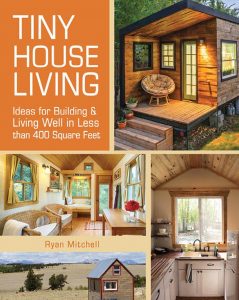Lowest Cost Ways to Own Your Own Home
What Are the Lowest Cost Ways to Own Your Own Home?
- Embracing tiny house living and potentially living mortgage free.
- Building your own low-cost self-build home.
- It could also be an affordable choice to repurpose or renovate an existing structure. (Though restorations can sometimes be more expensive than building from scratch.)
You may also be able to find a range of affordable ways to own your own home by exploring the co-housing or other co-operative schemes that could make it cheaper to buy and to live.
If, however, all that seems to much effort or not really your cup of tea, then you could still find an affordable way to buy. If you are struggling to find money for a deposit you may still be able to get a mortgage, especially with your parents’ help if they can give it.
Parents can help their children by:
- Buying a home outright for their child.
- Gifting them the money for a deposit on a home (or money for a tiny house to enable them to live mortgage free).
- Putting their names to a joint mortgage or guaranteeing the mortgage.
- Contributing to an offset mortgage.
Obviously, not all parents will be able to help their children in any of these ways. They could also help simply by allowing their children to move home/ move in with them to save money while they try to get together a deposit. If parents own a piece of land or a large garden, they might also be able (planning permitting) to allow them to live independently in a tiny home on their property.
A Guide to Tiny House Living
Tiny house living is a way to live in a frugal and eco friendly way. Tiny homes can be built or created relatively cheaply, potentially for less than the cost of the average first home deposit. Often mobile, a tiny home can be a great solution for a student or other young person who has yet to settle down in a particular place and decide where they wish to live. It can give young people a base in which to live while they travel and make it easy for them to move if they get a job opportunity elsewhere. Living in a tiny home can make it easier to save up a deposit, as the monthly bills will be far, far lower than in a traditional home and, depending on where the tiny home is placed, rent could be negligible or even non-existent.
How Much Does It Cost To Create a Tiny Home?
While all tiny homes are small in size, they come in a variety of shapes and scales. At their simplest, tiny homes can be rustic campers. At their most sophisticated they can be luxurious living pods. The cost of converting vans or an old caravan can start at just a few thousand pounds. As long as you are content to live simply and in a small way, you can live for a fraction of what it would cost to live in a conventional home. A purpose-built tiny home can be created for around £20,000 – £25,000 – potentially less if you are prepared to do a lot of the work yourself.
Where Could I Put a Tiny Home?
With planning permission, you may be able to locate a tiny home in the garden of a family home. Where this is not possible, finding land is likely to be the biggest challenge. However, it may be possible to find a place for a tiny home on disused land at the edge of a farmers’ field, for example, for a small land-rental fee. Of course, the other option is to consider a more nomadic lifestyle, and work as part of the online, digital community as you travel between a range of locations. While buying land can be expensive, there could be potential for people to club together and form co-operatives to buy disused brown-field or urban sites for a few tiny houses. Again, any scheme would have to meet planning regulations.
Why Consider a Tiny Home?
T
- Greener, more eco-friendly and sustainable living (especially if living off-grid).
- Affordable living space that first time byers could potentially own outright.
- Flexible, potentially mobile accommodation.
- A chance to reduce the amount of debt accrued by young people.
- Lower household bills and ongoing living costs.
- The potential to move on and sell the tiny home (for the holiday/ glamping/ additional garden building market) once a sum to built or buy has been saved.
A Guide to Low Cost Self-Builds
Tiny, mobile homes and other low cost self-builds could also potentially provide a lower cost option for those who want to get onto the property ladder, or simply want their own rustic and eco-friendly homes.
How Much Does a Low-Cost Self Build Cost?
The largest expense when it comes to self-building will almost invariably be the land. Land where planning permission will be granted can be difficult to find and expensive in the UK. That said, there are ways to source land and some may even have access to land through their family’s properties. Forming co-operatives with friends or like minded individuals could also be a good way to source land in an affordable way.
It is possible to get mortgages for land and self-builds, though this is usually more complex than simply getting a mortgage on a new build or other existing home.
People have created their own small self-builds for as little as £5,000 – £10,000. Cheap, eco-friendly natural building materials include wood from woodland on a site, straw (sourced as a by-product from local farmland) and cob. Inventive self-builders have been able to create their own homes for far less than you may imagine. So, if you are up for a lot of hard work, and likely some frustrations along the way, then building a low cost eco-friendly home could be a good way to go.
Why Consider a Small, Low-Cost Self-Build?
- The potential to live mortgage free a lot sooner than would otherwise be possible, or even to live mortgage free from the off.
- The chance to create a low-carbon, eco-friendly and sustainable home.
- The chance to have a custom home that perfectly meets you needs and wants.
- The opportunity, through good design, to reduce household bills/ energy use long term.
- The potential to learn a range of amazingly useful new skills in crafting and construction.
If you are interested in self-build, you could consider learning more on volunteering opportunities helping out other self builders around the UK and further afield through Poosh and other similar schemes.
Government Initiatives to Help First Time Buyers
If neither of the above options has potential for you, you may still be able to afford your own home even if it currently seems out of reach. There are a number of government schemes that may help:
-
Shared Ownership
If you cannot quite afford to buy 100% of a home, you may be able to buy a share of the home instead, and pay rent on the rest.
-
Help to Buy: ISA
Until late 2019, you could also get help to buy with an ISA, which will boost your savings by 25% when you save up to £200 a month.
-
Help to Buy: Equity Loan
You could borrow up to 20% of the purchase price of a newly built home (up to 40% in London) with an equity loan. You will only need a 5% deposit and the mortgage would make up the rest. (This scheme ends in 2021).
-
Starter Homes
Soon, the Starter Homes scheme could help you buy a new-build home with a 20% discount.
-
Discounted Sales
In England only, when councils and housing associations build new homes for sale, some are sold off at a 25%-50% discount. This is known as a discounted sale. Councils and housing associations who run this scheme set the criteria. You must usually have a local connection to the area the home is in if you want to use the scheme. Contact local councils or associations to ask them whether they have any discounted sales. Not all areas offer this scheme, but it is worthwhile inquiring.
Sometimes, if you want to own your own place, it is best to think outside the box. Look at all the potential avenues (including the potential bank of Mum and Dad) before you decide that you are condemned to a life of renting. There are more options open to you than you might imagine and when you delve a little deeper you could find potential for living without a whole life of debt.
Compare through MoneyPug today! and SAVE Money












